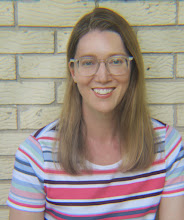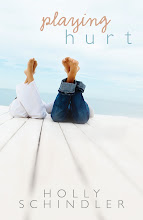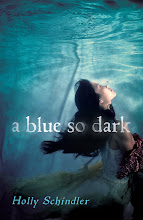1. What’s your background—how did you come to a career as an artist?
I was always really into my art classes growing up and then learned about Graphic Design my senior year of high school. I immediately knew this was the field I wanted to go into and study in college. I was always that weird organized art kid. From there I went to James Madison University in Virginia and earned a Bachelor of Fine Arts concentrating in Graphic Design.
I have always loved reading, especially Young Adult books. But, I never really thought about the publishing companies that actually made books happen until my best friend in college pointed out that maybe I could design book covers for them. So I started doing my research and I eventually got called for an internship at Hachette Book Group in their adult cover art department. I loved the publishing world so much that I came back to intern for a second summer after I graduated and I was lucky enough to get a full-time position there after my internship!
I came onto this project very soon after making the move to Penguins' childrens department. I came in towards the end of the project. There was actually a first cover that everyone was starting to second guess and my team decided they wanted to try a different approach. So, from there I got to take on the project and immediately wanted to try the idea of actually making a sign out of junk, as if the characters in the book had made it themselves.
We usually start off by having a conversation with the editor about the book. They also fill out an art form for us which has all of the basic information that we need to start working. From that, I usually begin to brainstorm by sketching and making lists. Then I usually go online for a bit to find some visuals to work from or possibly use on the cover. Then I'll read the book and take notes and do the process again from the key words I generate.
This project came up so suddenly and had to be finished so fast that I actually did not get a chance to read the entire manuscript before working on the cover. But, your very detailed notes about the story were very helpful and that's where I immediately got attached to the idea of making the sign.
In general, it is helpful to read a manuscript before designing the cover because you do want to make sure you get the details right. But, it can also be a hindrance because all of the sudden you want to put TOO many details on the cover, when it really should be a more boiled-down, simplified idea. So, I usually try to do an initial brainstorming session when I only know a summary of the book. I'll see how far I get with that and then read the full story to get more ideas and a better sense of the overall feeling of the book.
I definitely work mostly on the computer. Lots of InDesign and Photoshop! But, it's nice to try to get back to pen and paper every once and awhile, so when a project calls for it I try to create some things by hand and scan them onto the computer.
The most challenging part of making this cover was trying to figure out how to actually put the pieces together in Photoshop and make it look as real as possible (yet, still illustrated). I had our two of our interns help find photos and figure out how to form the letters. It was definitely difficult to make sure the title was readable. And luckily, we were even able to use pieces from the first version of the cover (the tree and the other junkyard sculptures seen on the rest of the jacket).
I'm actually very similar to you! Just starting a project can be really difficult. Specifically, I usually enjoy the initial brainstorming, but the moment I sit down and try to make those ideas into actual covers I start to doubt myself. Suddenly some of those ideas are very hard to make tangible. But, once I can get passed that initial round of ideas it's like getting passed the first bump and being able to ride more smoothly.
I really admire Jennifer Heuer's (http://www.jenniferheuer.com/) process of designing. I was able to work with her on a project while working at Little, Brown, and she's very creative. I really admire her ability to think out of the box and create as many things by hand as possible.
I think my best illustration technique is in fact my ability to pick the right illustrator to work with and develop my skills of art directing along the way. Working in children's books allows us to work with a wide range of amazingly talented illustrators, photographers, and designers. It's all in knowing how to match someone's strengths to the right project and help to guide them along the way. These partnerships really make our jobs more fun and the projects more rewarding.
I tend to work amongst organized chaos. I'm a very organized person but as a designer working on many different projects at a time it all has to go somewhere! So I tend to have little piles all over my work space. Other than that, I collect more books than I'll ever have time to read and I like to cover my walls in photos and illustrations that inspire me.
Thanks so much for dropping by, Lindsey! (You can see more of Lindsey's work at Lindsey Andrews Book Design.)








































Happy book birthday, Holly!
ReplyDeleteThanks so much!!
ReplyDeleteHappy Birthday to the Book Holly! I really enjoyed this interview with the artist.
ReplyDeleteCool and that i have a swell offer you: House Renovation What To Do First gutting a house
ReplyDelete